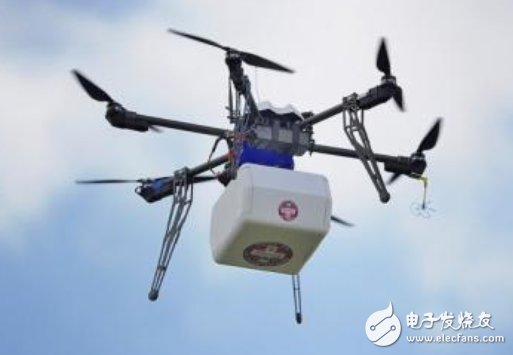HatTIesburg, Mississippi, USA is often suffering from natural disasters. HatTIesburg was hit hard during Hurricane Katrina. In 2013, there was a strong tornado and raging locals. Although people use social media to communicate with rescuers, the response time is still affected by hurricane sequelae such as road obstruction and wire breakage. Therefore, some people want to combine drones and telemedicine tools to allow drones to fly to the homes of the victims and provide assistance before the rescuers arrive at the scene. According to reports, Italo Subbarao, associate dean of the School of Orthopaedics at William Carey University and a disaster medical expert, conceived the use of advanced drones, combined with telemedicine kits to provide the fastest assistance to the victims. Subbarao and his team spent a year developing the first prototype. These drones are equipped with telemedicine kits and video guidance and hologram interfaces that allow doctors to talk to bystanders or victims and control locked medical kits. Subbarao said they are very close to developing a solution that could be used in the next hurricane season and hope to cope with emergencies, including tornadoes, mass shootings, bombings and serial car accidents, as well as emergencies in remote areas. Although still an emerging technology, its prototype drones have demonstrated the potential for drone assistance and complementary medical programs, especially during disaster events. Interact Analysis, a market research organization, predicts that commercial drone disaster response applications will grow 78% in the next five years. By 2022, commercial drone revenue is expected to reach $15 billion, up from $1.3 billion in 2016. The potential benefits of interactive drones in medical care are numerous. A study published in the summer of 2017 by the Journal of the American Medical Association (JAMA) found that drones reduced the response time to simulate a heart attack by about 16 minutes compared to emergency medical services. Over the past year or so, San Francisco drone startup Zipline has been working with UPS and global non-profit organization Gavi to provide blood and other basic medical supplies in Rwanda. Since its launch in October 2016, Zipline has shipped more than 2,000 flights with a total range of 62,000 miles and shipped more than 4,000 units of blood bags. The company recently announced a partnership with the Tanzanian government to provide important medical supplies and life-saving drugs in the country. Starting in the first quarter of 2018, Zipline will deliver 2,000 times a day to more than 1,000 medical institutions serving 10 million people. Its on-demand service will have four distribution centers, each with 30 drones capable of flying 500 flights per day. Its drone can carry more than 3 pounds of cargo at a speed of about 68 miles per hour. However, other companies are also paying attention to this area. In March 2017, California startup Matternet was allowed to operate a drone logistics network in a Swiss city and launched its first Matternet station in September to facilitate the delivery of blood and pathology samples between hospitals on demand. And its drone system can provide critical medical supplies to any hospital within 30 minutes. In October 2017, Nevada drone company Flirtey partnered with ambulance service provider REMSA to provide life-saving defibrillators for victims of cardiac arrest. In response to the 911 call, REMSA will dispatch two Flirtey drones and an automated external defibrillator to provide emergency relief to patients before emergency personnel arrive. These companies are applying for approval from the Federal Aviation Administration (FAA) and conducting public education activities on the service. The logistics industry UPS test drones provide emergency medical supplies in remote areas of the Massachusetts coast. The company collaborates with the American Red Cross and drone manufacturer CyPhy Works on a pilot project; in addition, the German DHL test drone Ship parcels to remote and hard-to-reach locations in the country, including the delivery of drugs to an island in the North Sea. Our company specializes in the production and sales of all kinds of terminals, copper terminals, nose wire ears, cold pressed terminals, copper joints, but also according to customer requirements for customization and production, our raw materials are produced and sold by ourselves, we have their own raw materials processing plant, high purity T2 copper, quality and quantity, come to me to order it! Cable Terminals Taixing Longyi Terminals Co.,Ltd. , https://www.longyicopperlugs.com